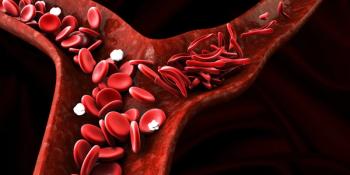
- September 2018 Immunization
- Volume 84
- Issue 9
Talking Points to Increase Patient Immunization Confidence
Many pharmacists report that although they like immunizing patients, they sometimes experience awkward silence when preparing injections or offer canned responses when patients ask questions.
Many pharmacists report that although they like immunizing patients, they sometimes experience awkward silence when preparing injections or offer canned responses when patients ask questions.
Between 33% and 63% of children have had needle phobia, and it often persists into adulthood, with 14% to 38% of adults being fearful.1 A good bedside manner in the counseling room can put patients at ease, distract them if they are afraid, and make it more likely that they will tell others that the experience was pleasant.2-5
VACCINES SAVE LIVES
The first successful vaccination was the smallpox vaccine. Interestingly, when the inoculation was developed in 1792, scientists did not know that smallpox was a virus. Biologists would not even discover what viruses were until the late 1800s.6,7 The vaccine, a concoction of more than 200 antigens, was the only available one in 1900.8 Smallpox had killed more than 300 million people by the time vaccines eradicated it in 1979 (paralysis-causing polio would be eradicated soon after9).
Today, if children receive all recommended vaccines, they receive only about 160 antigens.8 Vaccinations have produced remarkable results (table 10-16), and administering multiple vaccines at once is no problem.
This raises another point: Vaccines are not a modern invention. Evidence indicates that people were inoculated 1000 years ago. Inoculation, which introduces a disease to an animal or a plant to cause a mild form of the disease, is like vaccination in that they both induce artificial immunity against disease. Inoculation was a considerably more rudimentary procedure.17 Health care providers have been administering modern vaccines for more than 50 years and frequently use the terms interchangeably. Ample history has shown that vaccines save lives and are safe.
INDIVIDUALS SPURRED THE SCIENCE
One microbiologist is credited with saving more lives than any other individual. Maurice R. Hilleman developed more than 40 vaccines. The CDC recommends 16 routinely. Hilleman developed 8 of them (chickenpox, Haemophilus influenzae, hepatitis A, hepatitis B, measles, meningitis, mumps, and pneumonia).18,19 Before he died in 2005, he had hoped that other investigators could develop vaccines against AIDS, cancer, malaria, and tuberculosis. Hilleman had also suspected that vaccines could help avert prion diseases, prevent gastric ulcers, and reduce the consequences of autoimmune diseases.20
Many patients may be familiar with the HeLa cell line. The best-selling book The Immortal Life of Henrietta Lacks raised awareness of the cell line, its utility in cancer research, and ethical issues surrounding cell lines. Vaccines were developed similarly. Many were made using the WI-38 cell line from a child’s cells in 1962, propagated by a microbiologist at the Wistar Institute for Anatomy and Biology in Philadelphia, Pennsylvania. The cell line has since been used to create vaccines for adenovirus, chickenpox, measles, polio, rabies, rubella, and shingles. In addition, investigators have used this cell line to identify viruses and research aging. Some say these cells have saved more lives than any other.21
HERD IMMUNITY PROVIDES BENEFITS
Herd immunity benefits everyone once immunization penetration reaches 80% or more of the population (the threshold is pathogen specific).22 When this threshold is reached or exceeded, even individuals too sick or young to be immunized confer some protection. Individuals who rely on others to be the vaccinated herd put themselves and others at risk. Unvaccinated individuals create a window through which infection may occur. Measles was nearly eradicated in the 20th century, but the reintroduction of the wild-type virus caused spikes of infection, often in middle-aged adults who had been immunized.22 Educating patients about herd immunity often increases their willingness to be vaccinated.23 Pharmacists need to promote herd immunity and pay specific attention to booster shots so that waning titers do not invite disease outbreaks in vaccinated individuals.
Interestingly, humans are not the only species that employs herd immunity. Ants do, too, especially if members of the colony are infected with a fungus. The ants lick the infected nest mates, infecting the entire colony with small amounts of the fungus. Each ant’s immune system then mounts an immune response. This is called social immunization.24 Other insects, including bees, termites, and wasps, have also involved social immunity systems.25
CONCLUSION
Discussing the history of immunization can engage patients while they receive shots, demonstrate how successful immunization pro- grams have been, and generally expand knowledge. It can also get young people interested in the medical field and encourage patients to ask questions and be engaged in their own care.
Jeannette Y. Wick, RPh, MBA, FASCP, is an assistant director of the Office of Pharmacy Professional Development at the University of Connecticut School of Pharmacy in Storrs.
Articles in this issue
about 7 years ago
The Waiting Is the Hardest Partabout 7 years ago
New and Novel HIV Medicationsabout 7 years ago
Self-Care for Respiratory Issuesabout 7 years ago
States Continue to Expand Availability of Telehealthabout 7 years ago
Educating Patients About the Dangers of Sharing Rx Medicationsabout 7 years ago
When Complying With a Law Enforcement Request Causes ProblemsNewsletter
Stay informed on drug updates, treatment guidelines, and pharmacy practice trends—subscribe to Pharmacy Times for weekly clinical insights.

















































































































































































































